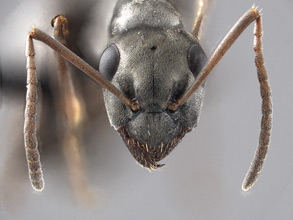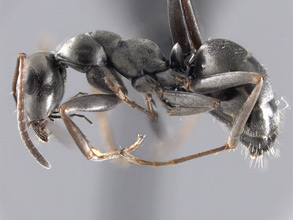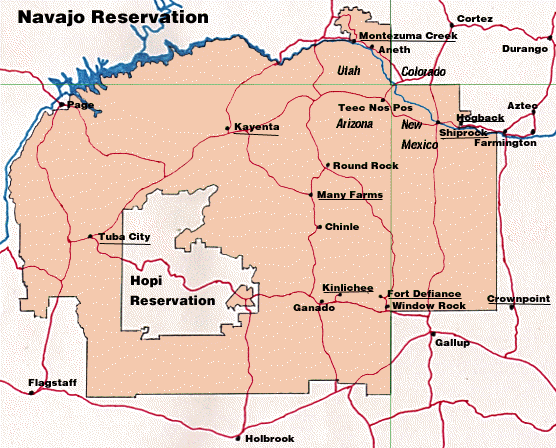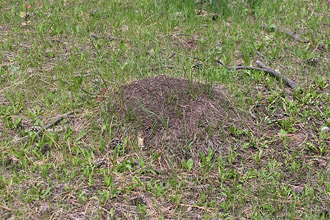- Identification
- Dark brown to black workers with appendages paler than the body. Formica podzolica is part of the subsericea complex within the fusca species group. The group is generally distinguished from other Formica species by their coloration (mainly black or brown body or with a dark colored head and gaster with a darker yellowish mesosoma). While it is relatively easy to assign these ants to the fusca group it can be difficult to identify this and many other fusca species without prior experience, a good reference collection and samples that are part of a nest series. Some rarely used morphological characters (features of the metothorax) are useful for separating the forms into species complexes. A key to the workers is provided in Francoeur (1973).
- Biology
- A boreal and alpine species that is common in many habitats within these biomes. Francoeur reports Formica podzolica is common in black spruce and jack pine forests around Quebec and is generally a coniferous forest species. It does not occur in the very densest of forest stands and, while it may be found in some mixed forests, it does not live in exclusively hardwood forest habitats. The name podzolica is informative, as it was chosen for the ant's preference for nesting in the sandy "podzolica" soil type.
- additional biology notes...
- Distribution
- Range
- S Canada and United States. As per Francoeur (1973):
Alaska, southern Northwest Territories, southern Canada and northern United States South to New Mexico and Arizona (within the mountainous regions) and southwards along the Appalachians in the east. The southern extent of their reach into the Appalachians is currently unknown but could possibly be found into Alabama.
- The map below is from Francoeur (1973) and shows sampled locations of Formica podzolica.
- Navajo Reservation Records
- Species records being processed.
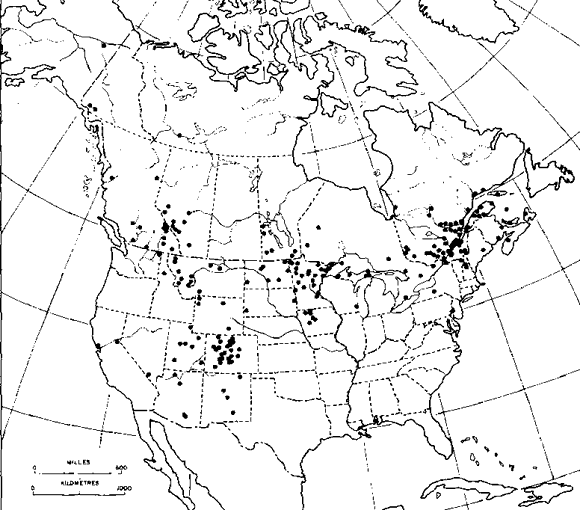
- Additional Notes
- Colonies can be large and in favorable conditions may average anywhere between 5,000 to 40,000 workers. Large thriving nests possibly contain more than 100,000 workers (Savolainen et. al 1996). In Quebec newly produced sexuals leave their nests for their mating flight from late July to early September (Deslippe and Savolainen 1994).
- Nests are made in the ground or occasionally in organic matter. Newly developing nests may contain a small crater around their nest entrance or be located under a stone. Mature nests can be topped by a large flattened areas of sandy soil. Gregg (1963) reports on the appearance of these large structures:
"sometimes huge, confluent bed nests of great expanse but low height. They always have many entrances, and could therefore be described accurately as polytremous nests. The debris may be heaped about a boulder or an old log, or may be piled in the open without any visible support. One such nest was observed in a streamside meadow and measured eight feet in diameter. Another occurred on a ridge in an open aspen stand being worked by beaver, and it was fully 25 feet or more (by rough measure) in its longest dimension."
- Formica podzolica has a diet similar to many other fusca species: mainly arthropods and carbohydrate rich liquids. They will forage on the ground and on vegetation.
- This species is likely to have been the subject of many published studies. Unfortunately these ants are often misidentified, and reported as, Formica fusca. At this time it is not possible to clearly assign to species many older North American Formica fusca studies since little of this work is associated with reference samples.
- Species from the Formica fusca group are some of the most heavily parasitized ants in North America. Other Formica and Polyergus species exploit fusca group species by enslaving their workers or through new queens parasitizing existing colonies to start their new colonies. The former occurs as the result of brood raids that have the exploitive species infiltrating a nest and carrying off both larvae and pupae. The latter occurs through a newly-mated foreign queen entering a fusca species nest, killing the queen and tricking the workers of the dequeened nest into raising her brood. Through time the fusca workforce is replaced by workers off the new species.
- Etymology
- Ecological. The species typically nests in podzolic soil.
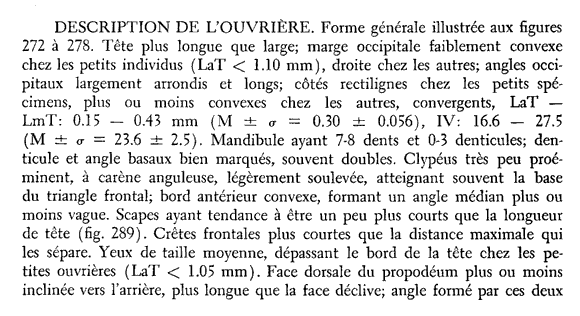
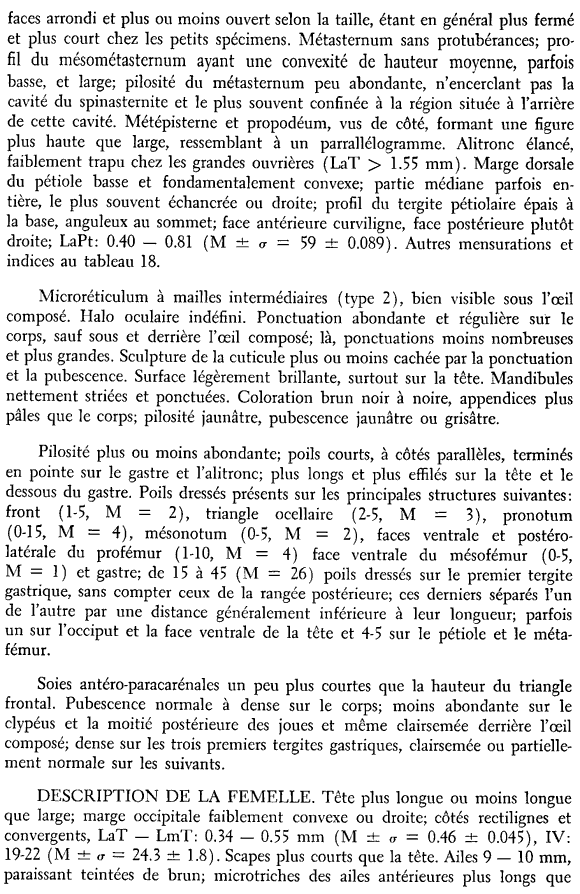
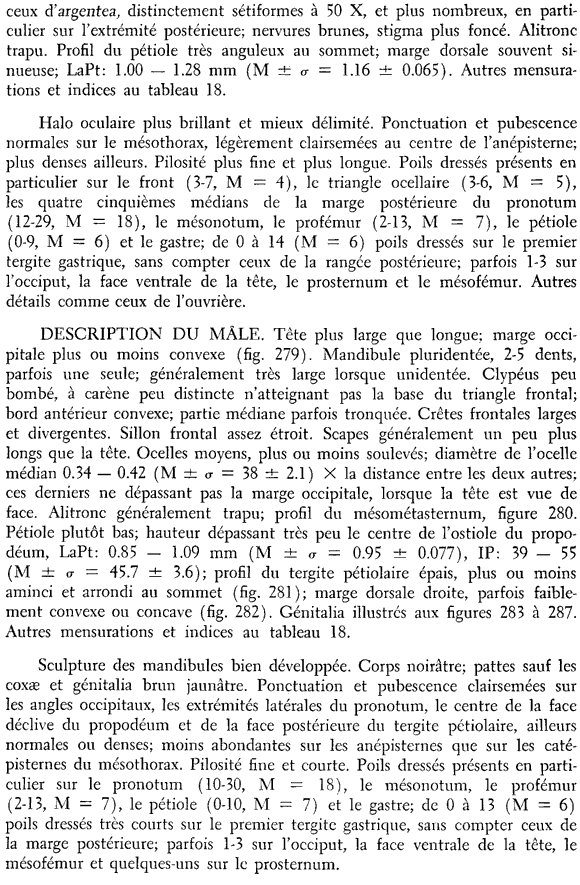
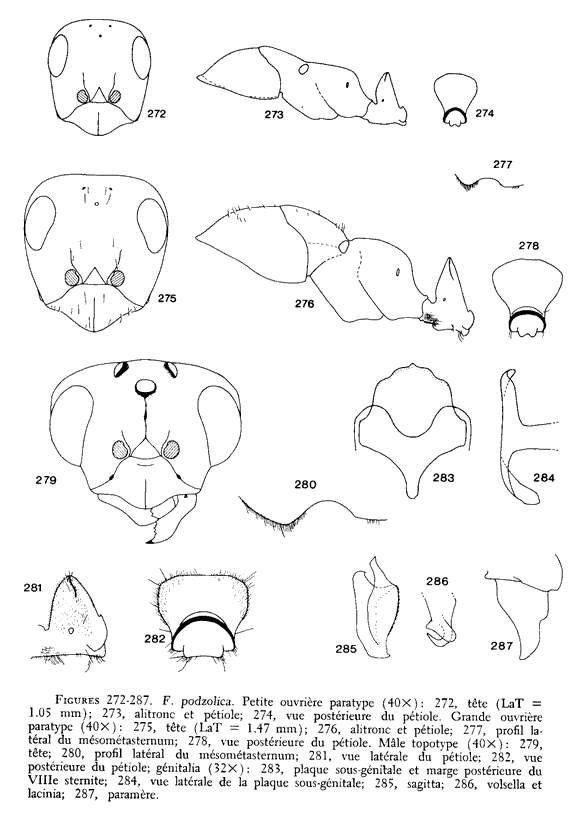
- Literature
- Deslippe, R. J. and R. Savolainen. 1994. Role of food supply in structuring a population of Formica ants. Journal of Animal Ecology. 63:756-764.
- Francoeur, A. 1973. Révision taxonomique des espèces néarctiques du groupe fusca, genre Formica (Formicidae, Hymenoptera). Mémoires de la Société Entomologique du Québec. 3:1-316.
- Gregg, R. E. 1963. The ants of Colorado, with reference to their ecology, taxonomy, and geographic distribution. University of Colorado Press, Boulder.
- Savolainen, R., K. Vepsäläinen, and R. J. Deslippe. 1996. Reproductive strategy of the slave ant Formica podzolica relative to raiding efficiency of enslaver species. Insectes Sociaux. 43:201-210.
- A note about these publications. The literature cited here is not meant to be an exhaustive list of papers published about this species.
Page authored by David Lubertazzi and Gary Alpert
